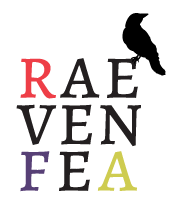Batting Comparison
I did a demo for VTMQG last week comparing different types of batting I’ve used. I volunteered for purely selfish reasons—I needed to clean out and organize my scraps, and also take stock of which ones I like, and which I might not care to buy again in the future.
The demo was very hands on and doesn’t translate well to the web, but here’s what I found.
The Process
I created three quilt sandwiches of each batting (large enough to cut down to 9″). I used fabric from the same manufacturer to try to keep things consistent, but used a different design for each for ease of visual comparison. The back is a solid. I quilted one of each set with a rough 1.5″-2″ grid, another with feathers and pebbles, and and the third with both.
I trimmed them all down, then overcast stitched the edges of the gridded and feathered squares to keep them from fraying in the wash.
Then, I washed the two overcasted blocks from each set (basic cotton wash, normal dry) to see how they ended up compared to the unwashed third block.

The Results
Batting choices can be very dependent on the project type, and this is certainly not an exhaustive list. I imagine different brands react differently even with the same fiber content. But, knowing how the batting will react to quilting and washing is helpful in making that choice.

| Fiber | Demo Brand | Shrink* | Loft | Max Gap | Binder |
|---|---|---|---|---|---|
| *according to the manufacturer | |||||
| Wool | Hobbs Tuscany Collection | minor | medium | 4″ | resin |
| Polyester | Soft n’ Crafty Extra Loft | minor | high | 2″-4″ | resin |
| 50/50 Bamboo/Cotton | Nature-fil | major | low | 8″ | resin |
| 70/30 Cotton/Poly | Pellon Eco Cotton | minor | low-med | 8″-10″ | scrim |
| 80/20 Cotton/Poly | Soft n’ Crafty 80/20 | medium | low | 2″-4″ | scrim |
| Cotton | Warm & Natural | medium | low | 10″ | scrim |
The least affected by washing and drying was the 100% poly. However, it was not much fun to quilt, and the loft is higher than I personally like.

The most affected by washing and drying was the 50/50 Bamboo/Cotton. There was an extreme amount of shrinkage. A different wash type might reduce that, but be forewarned. It is gorgeous before washing, though.

Personal Preferences
I’ve used all of these for various projects, but the two I use most often are 100% Cotton and an 80/20 Cotton/Poly blend. The former is great for all-cotton projects that I want to wash up all crinkly and soft, while the blend is perfect for baby quilts that I back with Minky, as the slight poly content reduces the shrinkage a bit.
What is your favorite batting type?








3 Responses to “Batting Comparison”
Nikki
12:26 pm | 03/15/15
Love your method! So far, I’ve only quilted with poly. Not having quilted much, I haven’t had much opportunity to experiment. Is cotton really easier to quilt than poly? I understand the different results from washing and drying, but not so much the difference in stitching. It is all between to pieces of fabric. Doesn’t the fabric have more to do with the stitching “feel”?
Michelle Cherry
10:32 am | 08/11/15
I’ve only used W & N 100% cotton. I’m doing a lot of string quilts to get rid of the scaps. Looking for a lighter weight to quilt. I found your test results very interesting. thanks, Michelle
Kat
1:46 pm | 03/14/16
Thank you for this informative post! You’ve saved me and other quilters a good deal of time and experimentation.